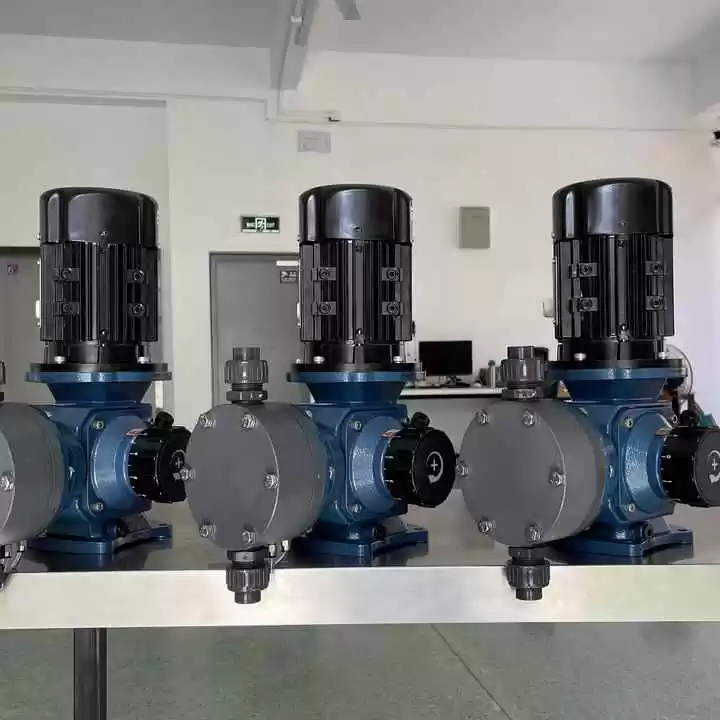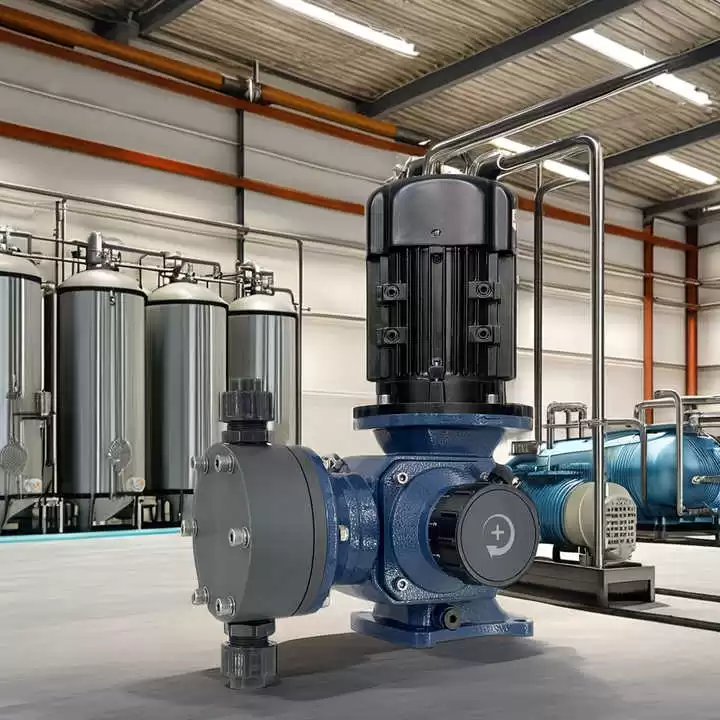Electronic Dosing Pump: Construction, Operating Principle, and Applications
Content Overview:
- Construction of the Electronic Dosing Pump
- Operating Principle of the Electronic Dosing Pump
- Applications of the Electronic Dosing Pump
- How to Choose an Electronic Dosing Pump
- Common Issues with Electronic Dosing Pumps
- Advantages of Electronic Dosing Pumps
- Disadvantages of Electronic Dosing Pumps
- Features of the Electronic Dosing Pump
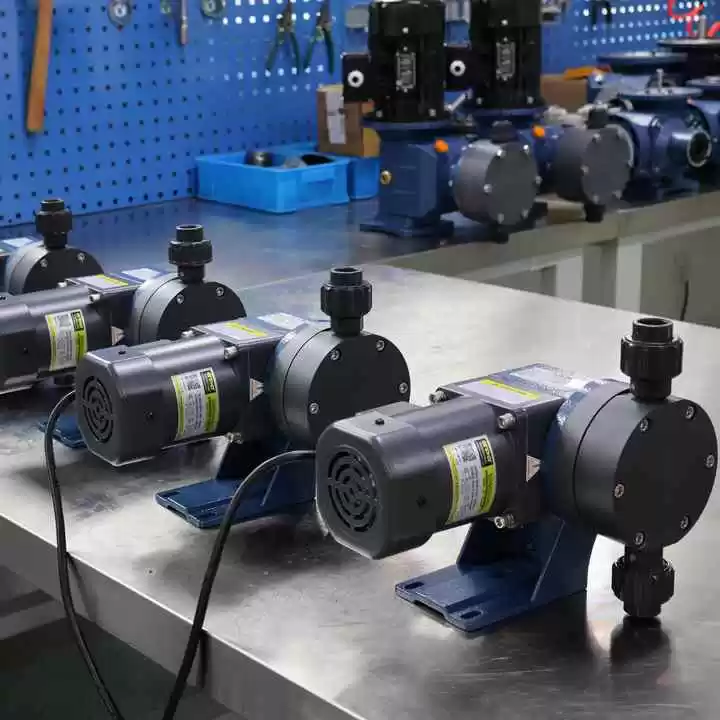
Construction of the Electronic Dosing Pump
The electronic dosing pump is a specialized pump that operates not mechanically, but through electronic commands for control. Unlike traditional mechanical dosing pumps, it uses electronic controls rather than conventional mechanical adjustment knobs. The electronic dosing pump is equipped with a safety valve, allowing users to easily regulate flow speed via electronic devices. Additionally, the pump integrates a drive device with a 4 – 20 mA signal or a frequency converter for precise control.
It’s important to distinguish between the electronic dosing pump and the electromagnetic dosing pump, as these are two completely different types of pumps. The electromagnetic dosing pump, or solenoid dosing pump, operates using the electromagnetic drive to move the diaphragm.
Electronic dosing pumps come in two main types: automatic control and manual control. The automatic version includes a sensor that sends signals to the controller in cases of overload or underflow.
Components of the Electronic Dosing Pump
The electronic dosing pump consists of several key components:
- Diaphragm/Piston
- Pump body
- Pump chamber
- Suction and discharge valves
- Suction and discharge ports
- Pump shaft
- Flow control and dosing unit
- Additional parts such as seals, balls, and bases
Each component plays a different role in the pump’s operation, working together to form a complete electronic dosing pump system.
Operating Principle of the Electronic Dosing Pump
The electronic dosing pump operates on the principle of suction and discharge, but its suction capacity is generally weaker than other types like diaphragm or gear pumps. Therefore, electronic dosing pumps are often used at the end or middle of chemical pumping systems.
Though capable of priming, its priming ability is weaker compared to other pumps. The pump’s dosing and flow rate adjustments are electronically controlled, making it easier for users to operate the pump according to their needs.
The pump operates continuously and cyclically, ensuring a smooth and reliable pumping process.
Applications of the Electronic Dosing Pump
Electronic dosing pumps have numerous applications in various fields, particularly for pumping corrosive, abrasive, toxic, and chemical substances. Some typical applications include:
- Chemical dosing, acids, and bases
- Fuel transfer (gasoline, diesel)
- Pumping viscous materials
- Pumping corrosive and hazardous chemicals
- Pumping hot tar, asphalt, molasses, and fish oil
- Pumping chocolate and rubber
- Petrochemical industry
- Wastewater treatment
- Pulp and paper industry
- Synthetic industries
- And many more applications.
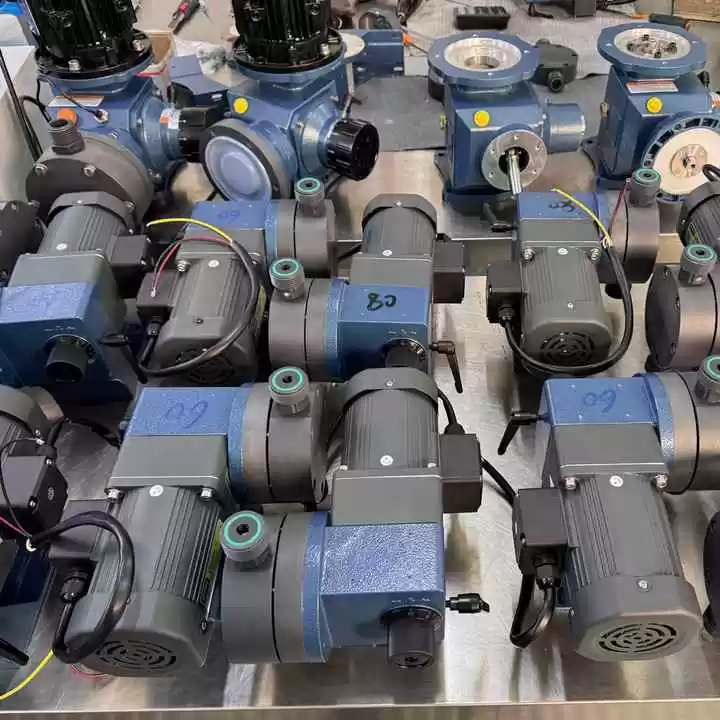
How to Choose an Electronic Dosing Pump
Choosing the right electronic dosing pump is essential for achieving high efficiency and long-term performance. When selecting a pump, consider the following factors:
- Opt for plastic materials for the pump’s construction.
- Choose genuine products from reputable brands like OBL, Blue White, Hanna, Doseuro, Pulsafeeder, Milton Roy, and others.
- Ensure the pump comes with a clear origin and is distributed by trusted suppliers with proper warranties.
- Consider the pump’s flow rate, power, and voltage specifications that match your requirements.
- Regular maintenance is necessary, but avoid contact with water to prevent damage to the electronic components.
- Frequent inspections are vital to ensure proper functionality and to avoid costly repairs.
Common Issues with Electronic Dosing Pumps
Despite the advantages of precise flow measurement, users may encounter several common issues with electronic dosing pumps:
- Valve damage, such as the suction valve or pressure-reducing valve, may occur due to high pump pressure, requiring replacement.
- Priming failure: The pump might fail to self-prime in certain conditions.
- Airlock: The pump may stop pumping fluid if there are air bubbles trapped in the pump head. To prevent this, solvents should be degassed before pumping.
- Electronic board damage: Prolonged exposure to moisture or water can damage the electronic board.
Advantages of the Electronic Dosing Pump
Electronic dosing pumps offer several key advantages:
- Precise flow control, enabling better management of dosing operations.
- Effective handling of hazardous liquids like corrosive substances, minimizing environmental impact and protecting operators.
- Ease of use with simple operation, high efficiency, and versatile applications.
- Flow rate adjustments are simple and can be done by adjusting the number of pumping heads.
Disadvantages of the Electronic Dosing Pump
While electronic dosing pumps have many benefits, they do come with certain drawbacks:
- They require regular inspection and maintenance to avoid issues during operation.
- Due to the high pressure, the diaphragms can wear out faster and need frequent replacement.
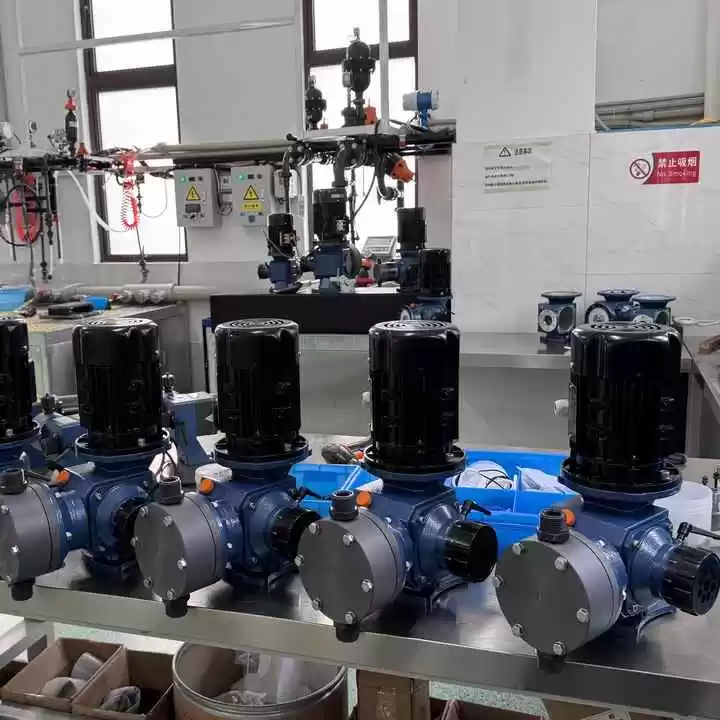
Features of the Electronic Dosing Pump
Electronic dosing pumps come with several notable features:
- Made from high-quality materials, produced using modern technology.
- Accurate dosing control for precise flow measurement.
- Check valve system to enhance flow stability and reduce malfunctions.
- Simple design with powerful performance.
- Easy installation and high safety standards.
- Low cost with high efficiency.
- Stable flow rate and accurate dosing.
- Quiet operation, low energy consumption.
- Widely used across industries like pharmaceuticals, food processing, and more.
These features make the electronic dosing pump a versatile and reliable choice for various industrial and commercial applications.
Other News
Classification of Chemical Dosing Pumps
Chemical dosing pumps come in various types and classifications, each with its own characteristics and applications tailored to different user needs. So, what are the different types of chemical dosing pumps? How do they compare, and what are their specific applications? Classification of Chemical Dosing Pumps by Manufacturer One of the easiest ways to classify […]
Guide to Choosing a Dosaki Metering Pump
How to Choose and Use a Chemical Metering Pump Is selecting and using a chemical metering pump difficult? What factors should be considered to ensure the best product and the highest efficiency in liquid pumping? Let’s explore these aspects in this guide! Steps to Choose a Metering Pump To select the most suitable metering pump […]
Common Issues with Dosaki Metering Pumps and How to Fix Them
Common Metering Pump Issues 1. Oil Leakage in the Pump Symptoms: The pump head appears dirty due to oil leakage, which can be observed visually during regular inspections. Causes: Seal failure due to debris entering the pump Damaged gasket Torn pump diaphragm caused by contamination Solutions: Inspect and replace faulty seals, gaskets, and diaphragms as […]
How to Maintain and Service Dosaki Chemical Dosing Pumps
The Dosaki chemical dosing pump, renowned for its efficiency and reliability, plays a critical role in various industries, especially for handling precise chemical dosing in processes. Regular maintenance and proper servicing are essential for optimizing the performance and longevity of your pump. Below, we provide a comprehensive guide to maintaining Dosaki chemical dosing pumps effectively […]





